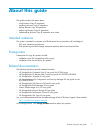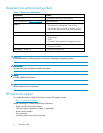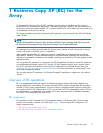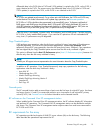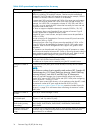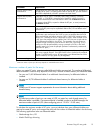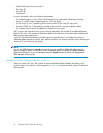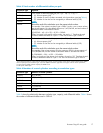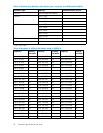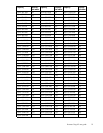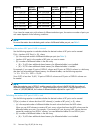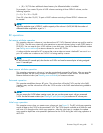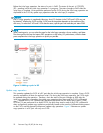
Parameter
Requirement
Physical device (PDEV)
maintenance
Maintenance of a PDEV that is not used by BC does not affect BC operations or
the status of BC pairs. If a PDEV contains LDEVs used by BC, you can maintain
that PDEV independently of the BC operations and pair status.
Logical device
(LDEV)
maintenance
If the status of a BC pair is COPY(PD), PAIR, PSUS, PSUS(SP), COPY(SP),
COPY(RS), or COPY(RS-R), maintenance for the LDEVs used by that pair is
restricted. Maintenance is also restricted for LDEVs with the Reserve attribute.
To maintain these LDEVs, suspend or delete the BC pair, or reset (unreserve)
the Reserve attribute.
Cache maintenance
If disk array cache maintenance is performed during a period of high I/O usage,
one or more BC pairs may be suspended. Reduce the I/O load before cache
maintenance.
Point-in-time backup
For pairs in PAIR status, host I/Os are copied to S-VOLs asynchronously. To
synchronize a pair and access the S-VOL as soon as possible, take the P-VOL
offline and split the pair before using the S-VOL. If the P-VOL cannot be taken
offline, a P.I.T. backup still occurs if a pairsplit is issued. When all data on the
P-VOL (up to the pairsplit time) is copied to the S-VOL, the pair is split and the
S-VOL becomes available for use (R/W). The operation may take longer to
complete if high write activity from the host to the P-VOL is occurring. A P.I.T.
backup can also be performed by issuing a pairsplit to P-VOLs in the SMPL
(simplex) state (in this case the pairsplit operation simultaneously creates and
splits new BC pairs.).
Failure
s
When a failure of any kind prevents a BC copy operation from completing, the
disk arr
ay suspends the pair. If an LDEV failure occurs, the disk array suspends
the pair
. If a PDEV failure occurs, BC pair status is not affected because of the
RAID ar
chitecture, but copy pace may be degraded.
Maintenance/upgrade
Under certain conditions, BC volume pairs may need to be re-established.
1
Maximum number of pairs per disk array depends on installed firmware version.
Maximum number of pairs for the array
When you create BC pairs, resources called differential tables arerequired.Thenumberofdifferential
tables available in one disk array depends on the array's amount of shared memory for differential tables.
• You can use 13,652 differential tables if no additional shared memory for differential tables is
installed.
• You can use 30,718 differential tables if additional shared memory for differential tables is
installed.
NOTE:
Contact your HP account support representative for more information about adding additional
shared memory.
NOTE:
The maximum number of pairs you can create is 8,192, no matter how much shared memory for
differential tables is available. If a command device is installed in order to use RAID Manager, the
maximum number of pairs is 8,191 (when configuring pairs of 1 P-VOL: 1 S-VOL ratio).
To calculate the maximum number of BC pairs, you must calculate how many differential tables are
required to create BC pairs, and compare the result with the number of differential tables in the disk array.
The fo
llowing applications also use differential tables:
• ShadowImage for z/OS
• Hitachi FlashCopy Mirroring
Business Copy XP user guide
15



